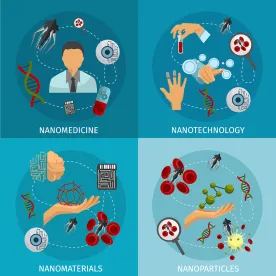The Organization for Economic Cooperation and Development (OECD) Series on the Safety of Manufactured Nanomaterials is to provide up-to-date information on the OECD activities related to human health and environmental safety. In September 2022, OECD has published two new reports. Advanced Materials: Working Description (No. 104) aims to illustrate the content of the advanced materials playing field and the purpose of the Working Party on Manufactured Nanomaterials’ (WPMN) engagement regarding these materials. In this context, advanced materials are understood as materials that are rationally designed to have new or enhanced properties and/or targeted or enhanced structural features with the objective to achieve specific or improved functional performance. This includes both new emerging manufactured materials, and materials that are manufactured from traditional materials. This also includes materials from innovative manufacturing processes that enable the creation of targeted structures from starting materials, such as bottom-up approaches. The report acknowledges that what are currently considered as advanced materials will change with time. The report includes examples of possible cases of advanced materials.
Sustainability and Safe and Sustainable by Design: Working Descriptions for the Safer Innovation Approach provides working descriptions for sustainability and safe and sustainable by design (SSbD). These working descriptions will be used for the further development of the OECD Safer Innovation Approach (SIA) and the implementation of the concept of SSbD for nanomaterials and advanced materials in the context of the work of the OECD WPMN:
-
Sustainability supports societal, economical, and environmental United Nations (UN) Sustainable Development Goals for the planet and for present and future generations. It relates to/is about minimizing the environmental footprint, in particular regarding climate change, pollution, and resource use, protecting ecosystems, and biodiversity. Sustainability should prevent waste in the first place (zero waste) and include material loops and processes that support the “waste hierarchy” that ranks waste management options according to what is best for the environment, giving top priority to durability and repairability. It has three main aspects, all of them overlapping and cross linked by safety: planet/biosphere/environment; people/society; and prosperity/economy. The report states: “In summary, sustainability could be described as the ability of a material or chemical to provide products/services with desired functionalities without exceeding planetary boundaries, while ensuring wellbeing and other socio-economic benefits.”
-
SSbD can be described as an approach that focuses on providing a function (or service), while avoiding onerous environmental footprints and chemical properties that may be harmful to human health or the environment. According to the report, for SSbD, three pillars of design can be specified:
-
Safe and sustainable material/chemical/product: Minimizing, in the research and development (R&D) phase, possible hazardous properties and sustainability issues (promoting traceability, sustainable sources of raw materials/natural resources, minimizing resource consumption and sources, promoting social responsibility) of the designed material/chemical/product while maintaining its function;
-
Safe and sustainable production: Ensuring industrial safety during the production of materials/chemicals/products, more specifically occupational, environmental, and process safety aspects. The pillar should also ensure processes for the production of materials/chemicals/products minimize emissions and resource consumption, and optimize waste management; and
-
Safe and sustainable use and end-of-life: Minimizing exposure and associated adverse effects through the entire use life, recycling, and disposal of the material/chemical/product. Materials/chemicals/products should be designed in a way that demand of resources is minimized during the use phase as well as during recycling, and that the material/chemical/product supports the waste hierarchy and circular economy.




 />i
/>i
